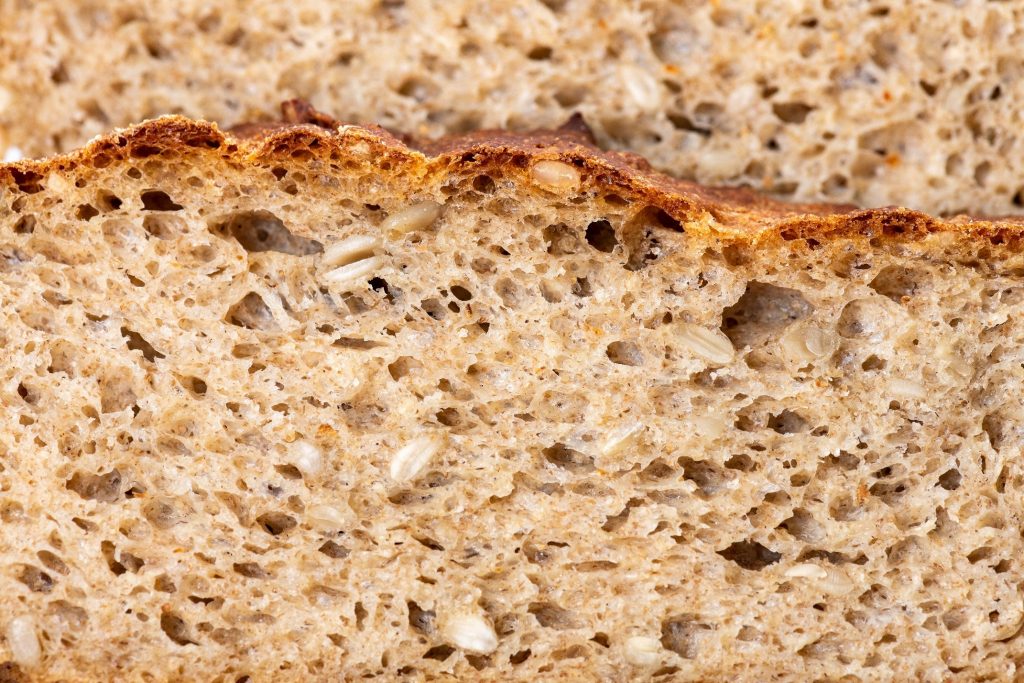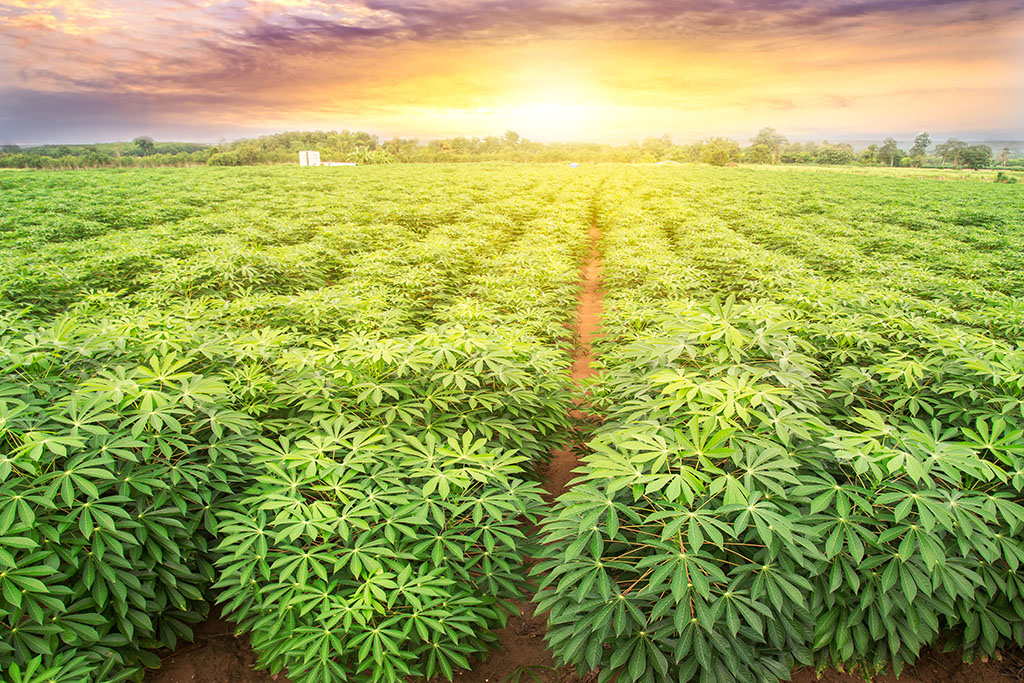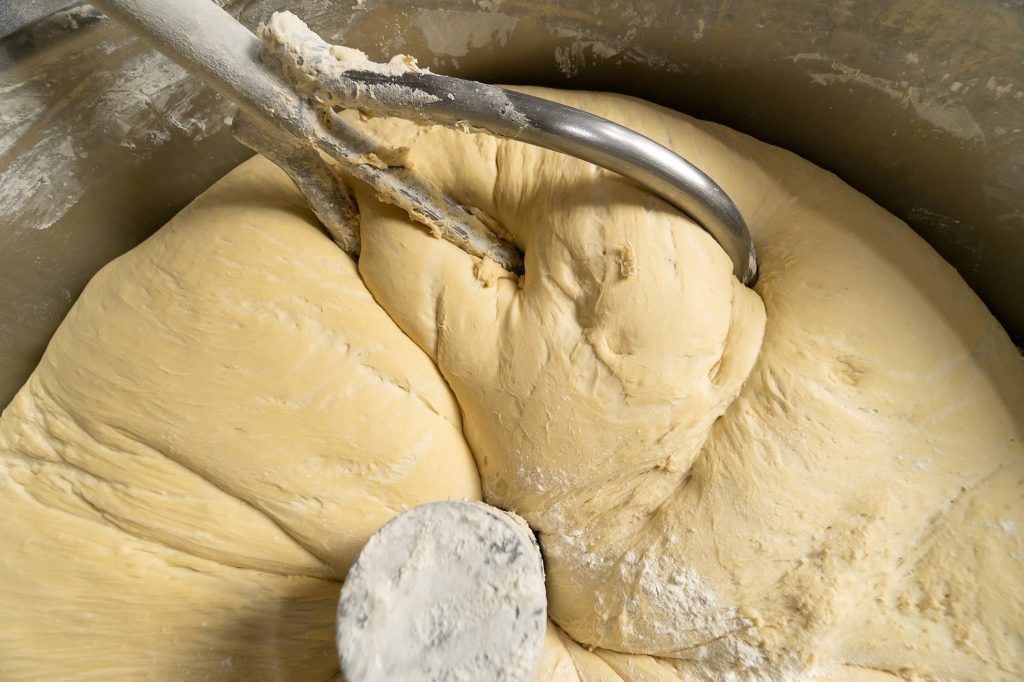Why we need a more sustainable food system
As the world continues to confront the coronavirus pandemic, we have a striking opportunity and obligation to create a more inclusive, resilient and sustainable food system. Enzymes can play an important role in this.
Today, our food system is responsible for over 30% of greenhouse gas emissions, with food loss and waste alone accounting for 8-10%. The pandemic exposed the fragility of our global food supply chains. From field to fork, unprecedented stresses led to disruption at every level and many weaknesses in our food system were exposed. The pandemic exposed the fragility of our global food supply system, and now the Ukrainian conflict is further shaking this system. Ukraine is, in fact, a critical food hub, in particular for wheat and fertilizers.
By 2050, our global population expected to swell to almost 10 billion people and coupled with rising incomes and urbanisation, demand for animal-based protein will increase. The World Resources Institute has predicted that by 2050, we will require 50% more food and 70% more animal-based protein to feed everyone.
Reducing environmental impact of food production
If we continue with our current-day food production practices and consumption patterns, we would need to convert a landmass twice the size of India to agriculture, leading to significant deforestation and biodiversity loss. It would also result in a failure to meet the Paris Agreement goal of limiting global warming to below 1.5°C.
Food producers all over the world are responding by adopting sustainable practices to reduce their environmental impact. On this sustainability journey, enzymes have become an increasing important ally due to their high efficiency, their specificity and their ability to create a more efficient food production system.
The use of enzymes in food preparations is an age-old process. Humans, unknowingly at first, used enzymes to their advantage for millennia in industries such as cheese making, brewing and bakery. The term enzyme was first coined in 1877 by Wilhelm Kühne, coming from the Greek word for “in leaven”; while the original purpose of including enzymes in manufacturing processes was to improve the efficiency of the process and reduce cost. However, it is now well established that enzymes go much further and can unlock significant sustainability benefits and greatly enhance product quality.
How are enzymes used in food production?
In most cases, the enzymes used in food are used as processing aids, where they aid in the manufacturing of the food but do not have a function in the final product.
Improve Product Quality:

In the baking industry, different types of enzymes are used to deliver different functionalities and properties to the final product.
- Amylases (bacterial, fungal and maltogenic) improve the gas-retention of fermented dough, keeping the bread fresher, softer, flavoursome for longer, which can lead to less food waste.
- Proteases are important for bread-making because they have a softening effect on dough and make kneading easier. They are used in large scale production of bread, baked goods, crackers, and waffles as these enzymes reduce mixing time, decrease dough consistency, assure dough uniformity, regulate gluten strength in bread, control bread texture and improve flavour.
- Lipases and phospholipases are also used to improve dough tolerance, significantly increasing bread volume after baking.
- Xylanases are used in baking to hydrolyse arabinoxylans and improve gluten formation.
In brewing applications, haze-negative proteases reduce haze in the final beer and improve shelf-life. In the animal nutrition industry, alpha-galactosidase have shown to improve nutrient digestibility of feed.
In dairy production, lactase enzymes enable the manufacturing of lactose-free products for lactose-intolerant consumers.
Achieve Operational Efficiencies:
Amylase, glucanase and glucoamylase enzymes are essential for food and beverage manufacturers to speed up production processes and improve finished product yield, therefore significantly lowering energy and water usage. These enzymes are widely used for producing dairy-alternative plant-based beverages.
The growing preference for plant-based food and beverages requires new enzymes that can allow plant-based protein sources to have similar functionalities to animal-derived protein sources and improve the taste and texture of final products. Enzymes have the ability to increase the stability of plant-based nutritional beverages, optimize process conditions and enable the production of finished products with a consistent mouthfeel, reduced added sugar and improved taste.
By using these amylase, glucanase and glucoamylase enzymes, manufacturers can reduce production time by 25% and use a wider range of raw materials, allowing improvements in extract yield and increased volume as well as a decreased carbon footprint.
Enable use of local, sustainable raw materials:

Enzymes can enable a wider variety of raw materials to be used in different processes. In the brewing industry, the most common brewing grain is barley. However, it is a cool-season, temperate-climate cereal, and in many parts of the world, it is not widely grown. The use of exogenous enzymes has enabled brewers to use alternative local grains for brewing such as sorghum, maize, rice and cassava for producing a consumer-acceptable beer at an economically attractive price point.
Thermostable α-amylase for high adjunct brewing, along with glucanase, proteases and glucoamylase enables use of alternative, un-malted, more cost effective local & sustainable raw materials without negatively impacting final product integrity.
The benefits to the local economy of using local grains is significant; it creates employment, provides incomes for local farmers, and supports the overall economy. For example, cassava is a tuber crop grown primarily in Nigeria, Brazil, Indonesia and Thailand, which is rich in available starch. It is underused for sugar production and beer production.
With pressures on the supply and demand of other starches and cereal crops, locally sourced, low-cost cassava represents a potential alternative source of sugar for syrup extract producers, brewers, distillers, confectioners and ethanol producers. With the optimal application of thermostable amylases and glucoamylase, extracts of the desired quality can be unlocked from the cassava tuber supporting the creation of a high-quality, affordable and sustainable alternative other than that brewed with imported barley.
How do enzymes benefit the environment?
An estimated one third of all food produced is lost or wasted. The resources and efforts for producing this food is also lost as the food is not used for nutritional benefit.
According to the World Food Program (USA), if we can reverse the trend on food waste, we would save enough food to feed 2 billion people, more than twice the amount of people who are undernourished whilst also making a significant contribution towards reversing climate change.
Enzymes are an increasingly important ally as we all seek to create a more sustainable food system. Examples include:
- Shelf life extension of foods to significantly reducing food waste
- Transformation of waste streams into value-added products
- Improvement of overall production efficiency and quality of final products. Some industry examples of this in action include:
Brewing industry:
Brewing has environmental challenges both during production and in the waste management phase. The largest waste by volume is brewers’ spent grain (BSG), followed by yeast. Approximately 70% of BSG is used as animal feed, but due to its high moisture content and microbial load, its shelf life is extremely short – less than 48 hours. Around 10% of spent grain goes to produce biogas, and the remaining 20% is landfilled. Every tonne of BSG in landfill releases 513 kg CO2 equivalent of greenhouse gases. This by-product of the brewing process has extraordinary circular economy potential, making it a perfect candidate for upcycling into human food supply, feed or for pharmaceutical purposes.
Exogenous enzymes, such as amylases, proteases and NSP (Non-Starch Polysaccharides Enzymes) can help improve extract yield thereby reducing waste and enabling re-use of waste or by-product like spent grain into value added products. These enzymes have a great potential to help cereal-based products manufacturers, and in particular breweries, valorise the by-products waste stream and convert it into value-added products by reutilising wasted proteins and fibre molecules.
Enzymes and processing aids deliver a significant reduction in energy consumption and CO2 emissions. There is potential for 19% energy savings, and 41% CO2 emission reduction by using enzymes and processing aids at different stages of the brewing process.
Bakery industry:

The bakery industry represents the largest volume of food waste. It is a major challenge for bakeries as they seek to ensure fresh availability for consumers yet also to minimise surplus. Increasing the shelf life of baked goods by two days reduces those items going to waste by 40%. In bakery applications, enzymes not only reduce waste, but also improve production efficiencies and enhance the quality of baked goods. Amylases break down starch to smaller molecules to improve softness over shelf-life, xylanases hydrolyse non-starch polysaccharides like arabinoxylan and hemicellulose so that insoluble hemicellulose is converted to soluble hemicellulose and improve water holding capacity, gluten development and elasticity. With donuts for example, some specialized enzymes can double shelf life whilst maintaining the softness, moisture, volume and other desired sensory attributes.
Meat production:
Meat is the highest value category of all food waste offenders. 20% of meat produced globally goes to waste and it is the most carbon intensive category of food waste globally. Specific Protease enzymes can help meat processors efficiently transform meat protein waste into valuable resources that can be utilized in a variety of applications, including biofertilizers. Proteases valorise animal by-products that would otherwise be waste bound, helping meat processors become more sustainable in their manufacturing process.
Fish industry:
In the fish industry, where waste is also a major challenge, advances in enzyme technology have enabled the extraction of value from fish waste, converting protein-rich fish by-product waste into cost-efficient fish oils and proteins.
The traditional linear economy is one based on an ethos of take-make-dispose, with insufficient consideration given to the impact or opportunity from our waste streams. Circular economy utilizing food waste gives us a great opportunity to upcycle “waste” into “value added” products, thus reducing waste accumulation and increasing resource productivity. Enzymes are fast becoming a hero in the circular economy due to their ability to turn waste streams into a potential revenue stream.
What are the future prospects of enzymes?
The future of our food production will rely on advances in microbiology, artificial intelligence and bioprocessing. Across all of these scientific and technical advances, enzymes have the power to play a significant role in creating the future of our food, to make it healthier, more sustainable and to add value to waste streams.
Innovation in enzymes through collaborations between experts in biochemistry, bioinformatic, molecular modelling, enzymology, molecular biology, fermentation, system biology, food science, and regulatory will drive enzymology research for waste stream valorisation and play a critical role in acceleration of circular economy.
With advancements in enzymes engineering, these natural biocatalysts are fast becoming pivotal tools to valorise agri-food and by-products waste, unlocking the recovery of essential nutrients and, in many cases, converting by-products waste streams into substantial revenue returns. When you couple this incredible potential with increased consumer focus on health, environment, sustainability and the ongoing research and innovation focus on enzymes optimisation, it is clear that the future of enzymes is to positively disrupt our food system by building a more efficient and sustainable food chain.
References
- Executive Summary (Synthesis) | World Resources Institute Research (wri.org)
- Why Sustainable Food Systems are Needed in a post-COVID World – IMF Blog
- Half of world population suffers poor nutrition: report (rte.ie)
- Environmental assessment of enzyme use in industrial production – a literature review – ScienceDirect
- Kirk-Othmer Encyclopedia of Chemical Technology, Chlorocarbons and … – Kirk-Othmer – Google Books
- The impact of industrial biotechnology – PubMed (nih.gov)
- Report on Industrial Biotechnology and Climate Change: Opportunities and Challenges – OECD
- How blockchain is turning back the tide on food waste | Promotional Feature | The Grocer
- Food Science and Technology in China: from 2020 to 2035 (researchgate.net)
- Transforming food waste: how immobilized enzymes can valorize waste streams into revenue streams | npj Science of Food (nature.com)
- Food Waste: How the World Food Programme Helps Recover Food Loss (wfpusa.org)
- Kerry announces results of sustainability life cycle assessment – BRAUWELT international
- Brewing Sustainably | Kerry
- Calculate The Impact Of Brewing Sustainably | Kerry

 Shekhar is food scientist with vast experience in industrial and academic ecosystem including technical leadership on enzymes application, new product development and innovation; moreover, he has deep interest in embedding sustainability success factors in innovation framework and process.
Shekhar is food scientist with vast experience in industrial and academic ecosystem including technical leadership on enzymes application, new product development and innovation; moreover, he has deep interest in embedding sustainability success factors in innovation framework and process. 